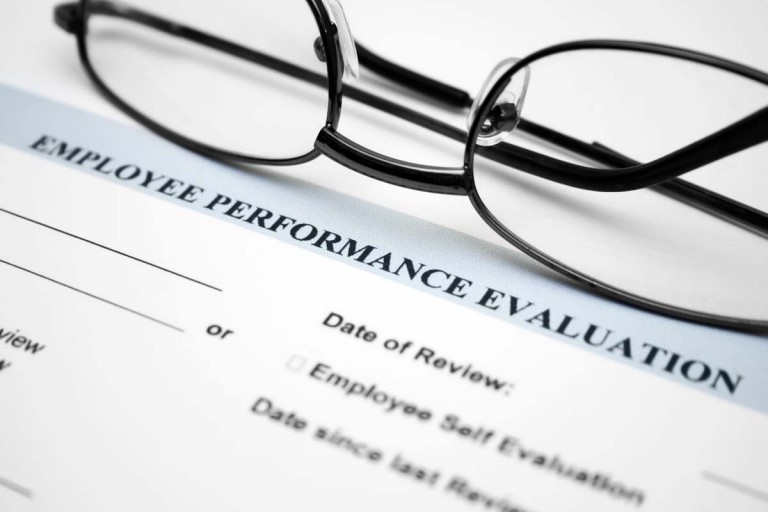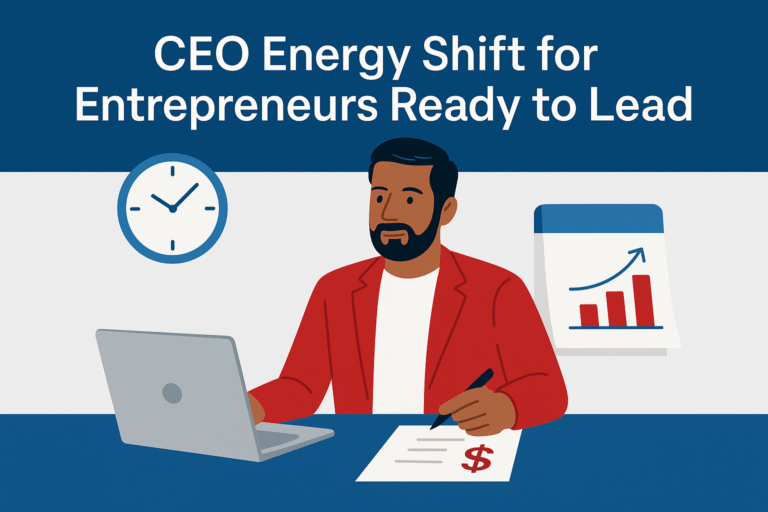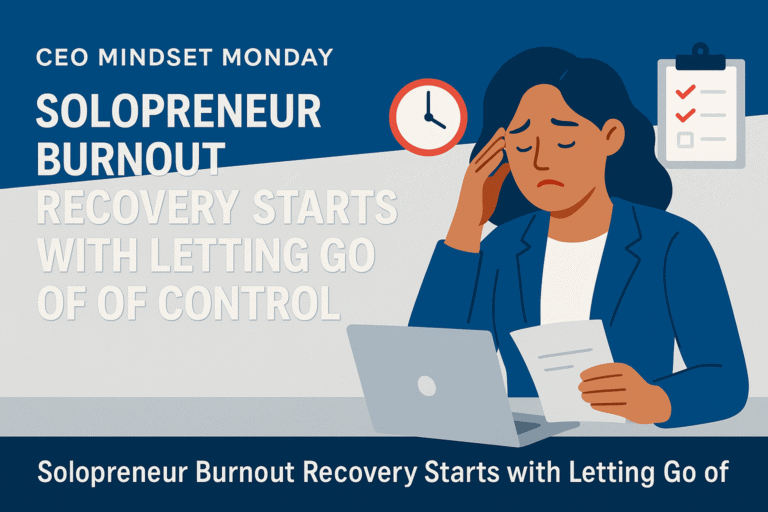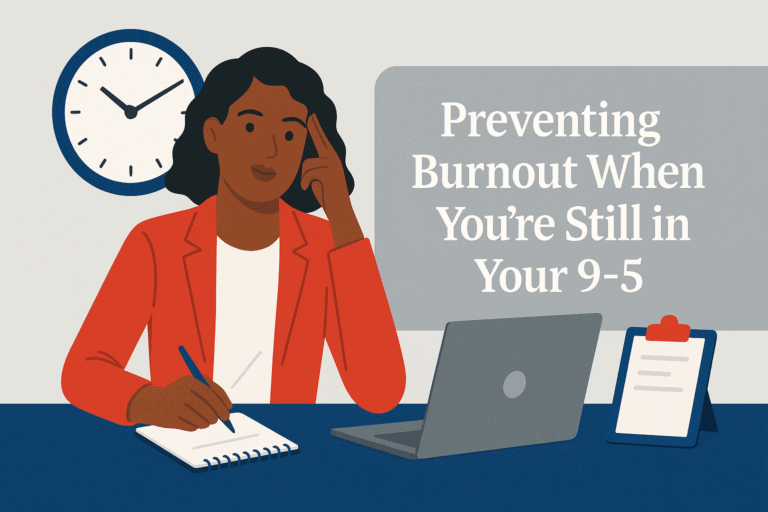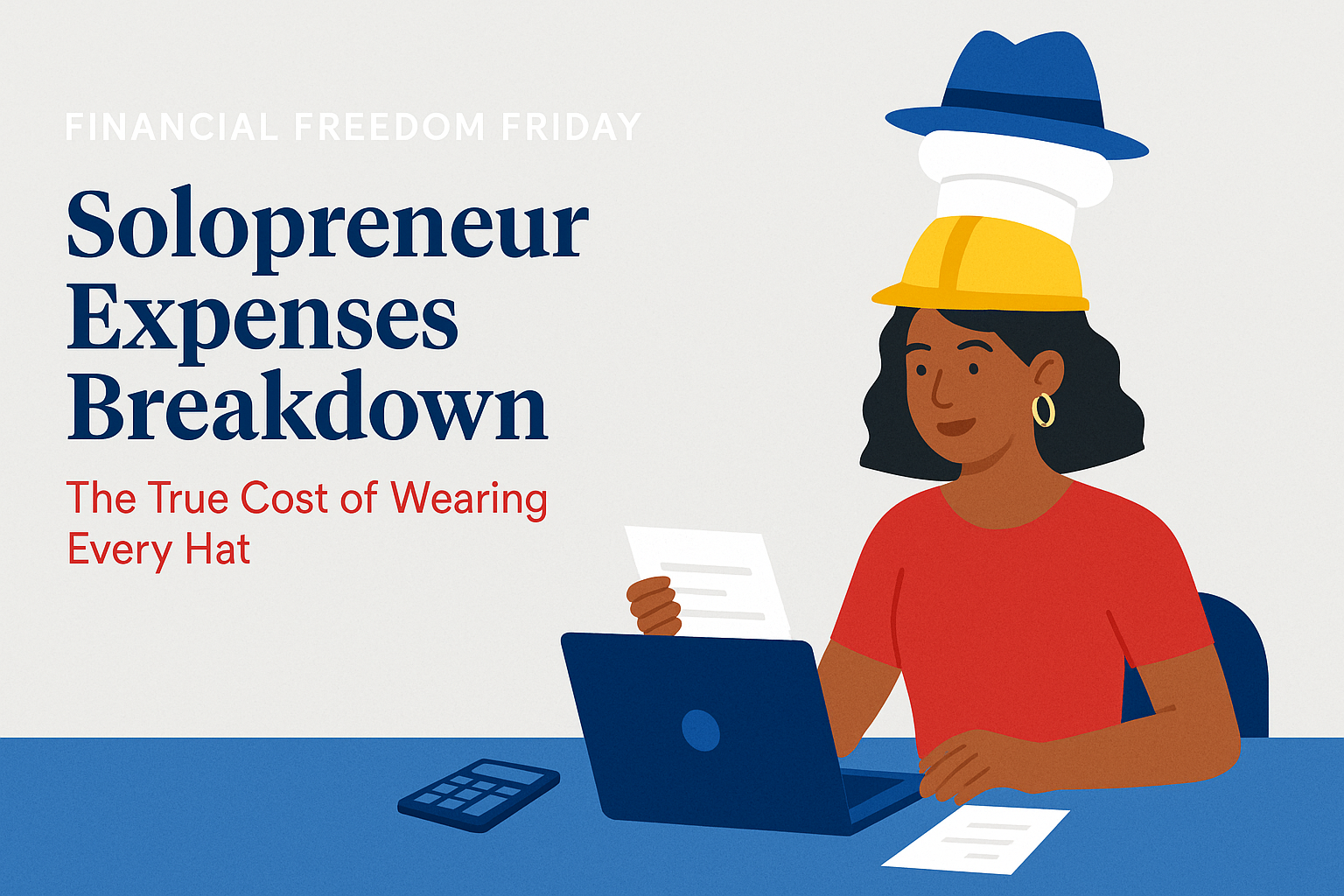Financial Freedom Friday
The cost of burnout is rarely calculated until it’s already too late. We think of burnout as exhaustion, as something that can be fixed with a weekend away or an extra cup of coffee. But burnout isn’t just emotional—it’s financial. It shows up in medical bills, in missed opportunities, in the slow bleeding of productivity that keeps your business from ever turning a real profit.
I’ve seen it in my own entrepreneurial journey. In the early years of Backbone America, I had plenty of ideas but no real systems. Every launch, every course, every blog post felt like reinventing the wheel. I wasn’t just tired—I was losing money. The time I spent reworking content or scrambling to fix mistakes was time I could have invested in growth. Looking back, those inefficiencies were some of the most expensive lessons I’ve ever learned.
That’s the truth about burnout: it costs more than energy. It costs money. And if left unchecked, it can cost you the very freedom you started your business to create.
What the Cost of Burnout Really Looks Like
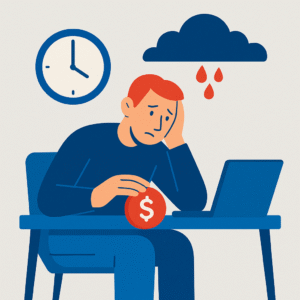 The cost of burnout has been studied extensively in the corporate world. The World Health Organization has identified burnout as an occupational phenomenon that contributes to billions of dollars in lost productivity each year. Harvard Business School reports that workplace burnout costs U.S. businesses an estimated $190 billion annually in healthcare spending alone. That’s not counting the ripple effects on decision-making, innovation, and turnover.
The cost of burnout has been studied extensively in the corporate world. The World Health Organization has identified burnout as an occupational phenomenon that contributes to billions of dollars in lost productivity each year. Harvard Business School reports that workplace burnout costs U.S. businesses an estimated $190 billion annually in healthcare spending alone. That’s not counting the ripple effects on decision-making, innovation, and turnover.
For entrepreneurs, especially those building a business on the side, the numbers may look smaller but the stakes feel higher. A corporate giant can absorb lost productivity; a solo business owner can’t. Burnout doesn’t just mean a bad quarter—it can mean shutting the doors completely.
The costs break down into two categories:
Direct financial costs: doctor’s visits, medication, therapy, missed days of work, lost clients.
Indirect costs: poor judgment that leads to underpricing, failed launches from lack of energy, delayed growth because there’s no capacity to think strategically.
The Cost of Burnout for Side Business Owners
When you’re working a full-time job and building a business at the same time, you’re balancing on a tightrope. The danger isn’t just falling—it’s burning out while still trying to stand.
I remember one season when burnout hit me hard. I kept Backbone America alive, but only just. In truth, I defaulted to what felt manageable at the time: writing blog posts. It kept me visible, but those posts didn’t move the financial needle. They weren’t tied to revenue. Looking back, I see how much it cost me in time and money. If I had taken that same limited energy and put it toward a smaller number of high-value actions, my business would have grown instead of just coasting.
That’s the trap many side business owners fall into. Burnout doesn’t always look like stopping. Sometimes it looks like busywork that feels productive but doesn’t generate results. And every hour spent in that cycle has a hidden price tag.
How Burnout Shows Up in Your Finances
The cost of burnout isn’t always obvious. It’s not like getting an invoice that says, “You lost $3,000 this month because you were exhausted.” But the signs are there if you know where to look. They hide in your numbers, in the way your revenue trends flatten out, and in the opportunities you quietly let slip by.
Declining Productivity
One of the first places burnout hits is your productivity. Tasks that used to take an hour now drag into three. You’re staring at the same sentence, rewriting the same email, reformatting the same post. On paper, you’re “working” — but your output per hour has been cut in half (or worse).
For entrepreneurs, that drop has a direct financial consequence. If you bill clients, your effective hourly rate plummets. If you run your own products, launches take longer to deliver, which means slower cash flow. Burnout steals not just your energy, but your margin.
Mispriced Offers
When you’re fresh, you can calculate your costs, measure your time, and set your prices with intention. But when you’re running on fumes, all that analysis feels impossible. So you undercharge just to get a “yes,” or you pile on extras to avoid disappointing anyone.
The math might not hit you right away. But weeks later, when the project is still open and your profit has vanished into unpaid hours, you see it clearly: burnout blurred your ability to make sound pricing decisions. And those missteps can stall your entire business model.
Rework and Errors

I’ve seen this in my own systems work. When I was too stretched, I’d push a workflow live before it was fully tested. Then I’d spend twice as long troubleshooting later. If I’d slowed down enough to build carefully, I could have avoided the extra hours — and the unnecessary stress. Every mistake has a price tag, and burnout makes them multiply.
Missed Opportunities
Perhaps the hardest cost of burnout to measure is what never happens. The product idea that sits half-finished because you’re too drained to polish it for launch. The potential client you never call back because the thought of another conversation feels overwhelming. The networking event you skip because you can’t muster the energy to show up.
In the early stages of business, these actions are everything. They’re the seeds that grow into revenue, momentum, and long-term freedom. But burnout makes those small but critical moves feel impossible. And the price isn’t just today’s lost sale — it’s the compounding effect of progress you never set in motion.
Those missed opportunities don’t show up as line items in your bookkeeping, but they can be the biggest losses of all. A single client could have covered your software costs for the year. A single launch could have opened the door to recurring revenue. But when burnout runs the show, opportunity passes right by.
Preventing the Cost of Burnout
The antidote to burnout isn’t just rest—it’s systems. The way to reduce the cost of burnout is to build before you burn out.
When I came back to Backbone America after leaving teaching, I had a new skillset: automation. My role as a Business Process Automation Engineer taught me the value of workflows that take the load off your plate . I stopped treating every blog post, launch, or client system like it was the first time. Instead, I created templates, automations, and standard operating procedures that let me save energy for strategy.
For example, automating my blog publishing workflow with Jetpack Social meant that when I published a post, it also went out to multiple social media channels automatically. What used to take hours became a few clicks. That wasn’t just about saving time—it was about saving myself from burnout and keeping my business moving.
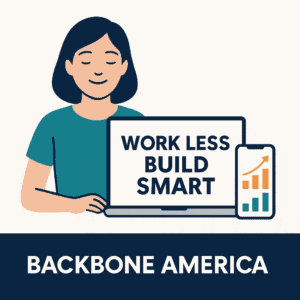
You don’t need to build everything overnight. Start with one system—your invoicing, your email follow-up, or your content calendar. Every process you automate is one less demand on your energy and one less expense tied to burnout.
If you want a step-by-step way to put these systems in place, I built Work Less, Build Smart to help you do exactly that. It’s a course designed to give you the structure, tools, and automation strategies that protect your time and your profits—so you don’t just survive in business, you thrive.
Freedom Beyond Finances
Money matters, but freedom is bigger than money. Burnout robs both. You can have financial stability and still feel trapped if you don’t have the energy or health to enjoy it.
That’s why my vision for Backbone America is about more than just income. I want the freedom to live and work from anywhere, to spend a month in another country without rushing back after seven PTO-approved days . That dream doesn’t survive burnout. It requires systems, sustainability, and the foresight to build before the breaking point.
Financial freedom without time freedom isn’t really freedom at all. And burnout is the wall that keeps too many entrepreneurs from breaking through.
Let’s Wrap This Up
The cost of burnout is far too high to ignore. It drains your bank account, your health, and your vision for freedom. But it’s also preventable. By building systems early, pricing your offers sustainably, and protecting your energy as fiercely as your profits, you can safeguard not just your business but your life.
If you want more strategies to protect both your finances and your freedom, I invite you to join my mailing list. You’ll get access to insights and resources that go deeper than blog posts—tools designed to transform the way you build your business. Sign up here to stay in the know.

